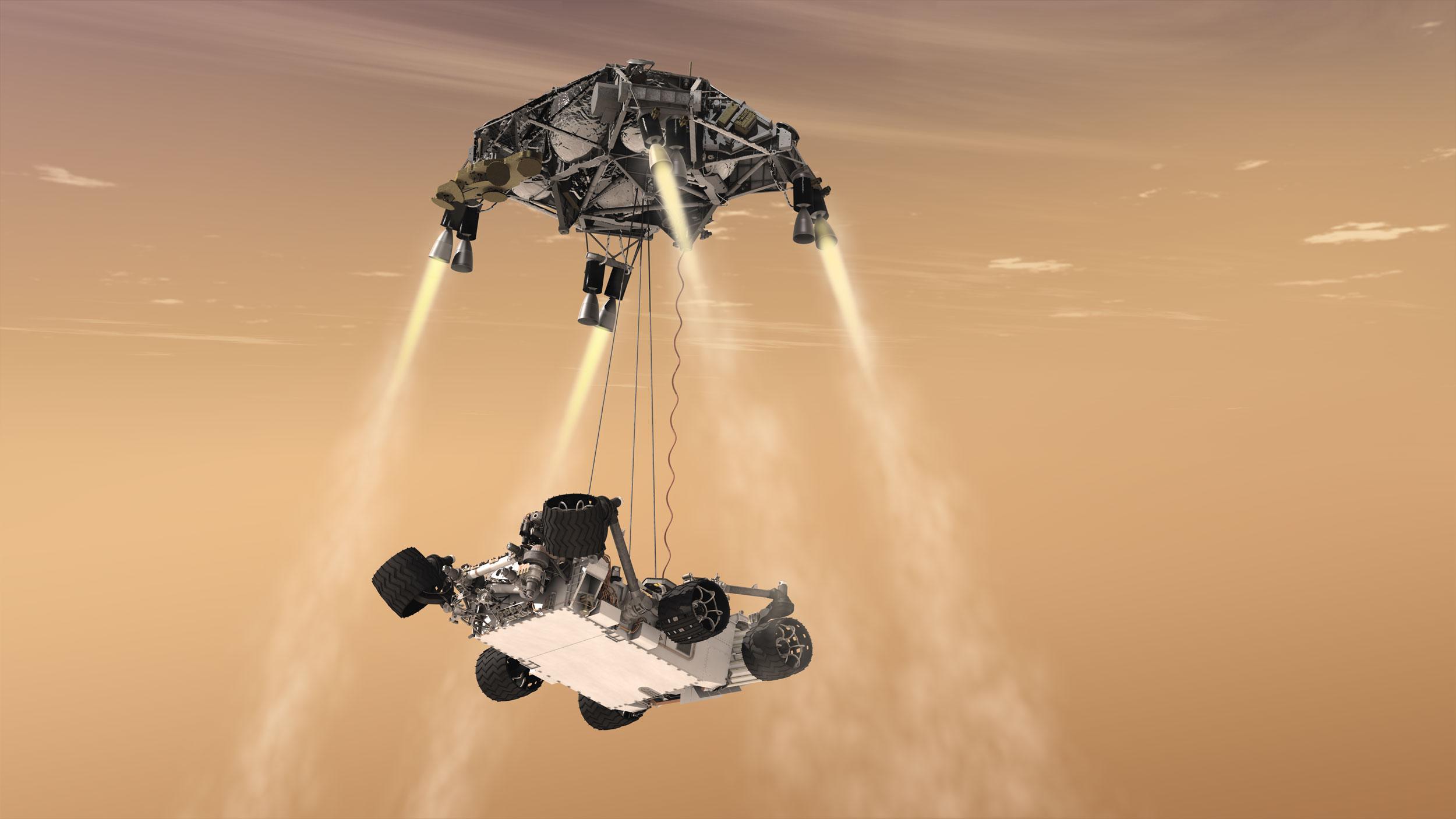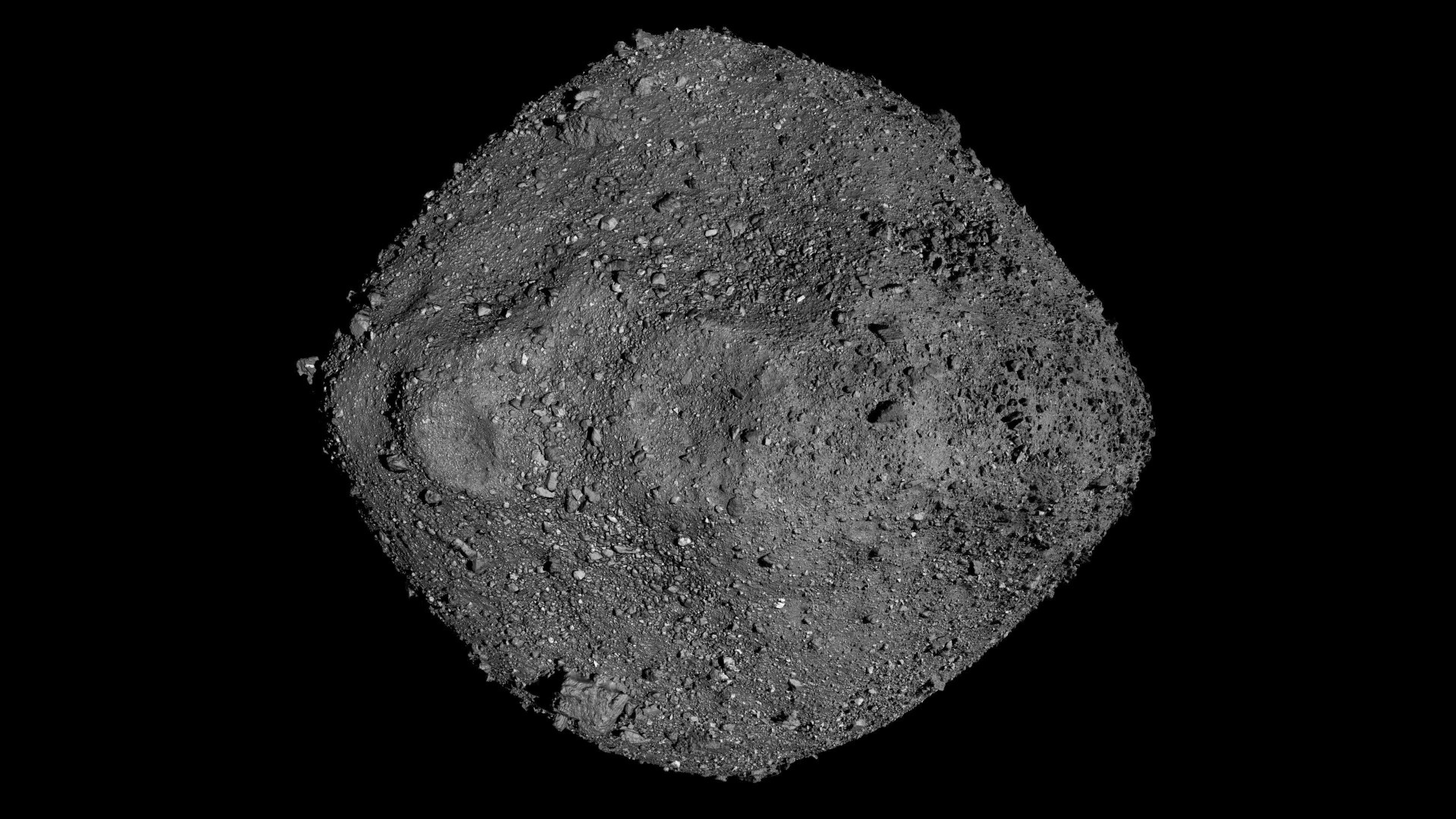Despite Risk, Experts Bet on New Mars Rover's Audacious Landing Plan

Many have been fretting about the seemingly implausible, risky landing strategy of the new Mars rover Curiosity set to arrive on the Red Planet next month, but engineers say the worry is overblown.
Curiosity, the Mini Cooper-size centerpiece of NASA's Mars Science Laboratory (MSL) mission, is due to be lowered onto the Martian surface by a hovering Sky Crane holding it up via tethers. Despite the audacity of the concept, many aerospace engineers say the plan is solid.
"I agree it looks scary, it looks risky, but it's technically sound," said Georgia Institute of Technology professor Bobby Braun, who served as NASA chief technologist from 2010-2011. Braun was not part of the engineering team, based at NASA's Jet Propulsion Laboratory in Pasadena, Calif., that designed the Curiosity landing system. "In my view, it's not risky, it's actually the right way to land the system they're trying to land."
The new $2.5 billion rover is designed to analyze samples of Mars rock for signs that our planetary neighbor is, or ever was, habitable to life. Weighing in at 1 ton, Curiosity is too heavy to land with the assistance of cushioning airbags, like NASA's previous two Mars rovers, Spirit and Opportunity.
Instead, parachutes will slow the MSL descent stage toward Mars at first. Then, the descent stage will use rocket engines to dampen its speed further. Finally, at about 115 feet (35 meters) above the surface, the Sky Crane system will lower Curiosity, wheels-down, toward the ground, attached to nylon tethers. The rover is designed to be gently settled on the surface, after which the Sky Crane will detach and fly off to land a distance away. [How Curiosity's Nail-Biting Landing Works (Pictures)]
The plan requires a large number of sophisticated parts to work impeccably, and is utterly different than any previous mechanism used to land a machine on another planet, prompting some to charge that it's a scheme Rube Goldberg would have approved.
"A lot of people seem skeptical of it. I'm not," said Stephen Gorevan, chairman of New York City robotics firm Honeybee Robotics, which built Curiosity's internal Sample Manipulation System, but wasn't involved with the landing strategy. "I just think, the thing has been so tested. I see the electromechanical elements, I'm an engineer, I see at least each individual element of the scheme seems very reliable to me. It's new, it's daring, but I see it working."
Breaking space news, the latest updates on rocket launches, skywatching events and more!
The Mars Science Laboratory team members themselves have admitted that the landing will be nail-biter, as the fate of the rover's entire two-year mission rides on the Sky Crane working correctly.
"Everyone will be biting their nails, but that's not because they're not confident," Braun told SPACE.com. "I've worked on a couple of Mars projects myself, and I can honestly say that there is no team more deserving of success through the actions they've taken than the MSL team. They've put everything into this and they rightfully should be confident. At the same time, the reason we're going to Mars is because it's an unknown. Space exploration is hard, and landing on Mars is one of the hardest things we do in space exploration."
Another aerospace engineer, Robert Zubrin, president of the Mars Society, agreed the Sky Crane plan is technically sound, but said he wished that a more field-proven technology had been chosen for such an important mission.
"I can see the arguments why it should work," Zubrin said. "I'm not one of these people who say, 'Oh, this is ridiculous.' However, it is its first time out. We've got an untried system being used on a mission in which the whole ball game is at stake."
Zubrin said the success or failure of the Sky Crane, and hence of MSL itself, will likely determine the future of Mars exploration.
"What's at stake here is the entire Mars program," Zubrin said. "If this fails I think it will be very hard to push back at the Obama administration, as well as at the fiscal conservatives. People will say, "Look, we just gave you $2 billion and you failed.' On the other hand, if it succeeds, I think the level of success is going to be very profound."
Follow Clara Moskowitz on Twitter @ClaraMoskowitz or SPACE.com @Spacedotcom. We're also on Facebook & Google+.

Clara Moskowitz is a science and space writer who joined the Space.com team in 2008 and served as Assistant Managing Editor from 2011 to 2013. Clara has a bachelor's degree in astronomy and physics from Wesleyan University, and a graduate certificate in science writing from the University of California, Santa Cruz. She covers everything from astronomy to human spaceflight and once aced a NASTAR suborbital spaceflight training program for space missions. Clara is currently Associate Editor of Scientific American. To see her latest project is, follow Clara on Twitter.

